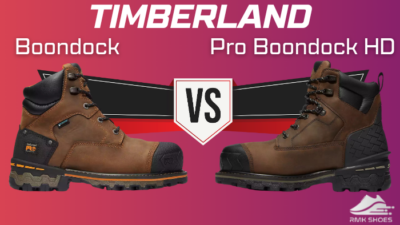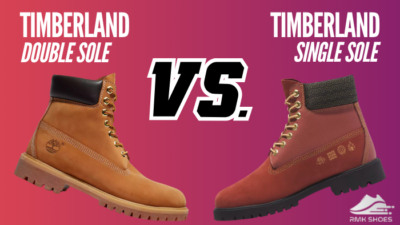On Running, known for its innovative Cloud technology, offers two popular choices for your next pair of shoes: the Cloudflyer and the Cloudstratus.
Both shoes by On are light and have a soft CloudTec® sole for comfy landings and quick rebounds. They have a breathable mesh upper for comfort and a Speedboard for efficient energy return.
But which is the best On Cloud shoe?
In this article, I’ll dive deep into both shoes, dissecting their features, strengths, and weaknesses to help you find the best lightweight runner.
Let’s begin!
An Overview of On Running Cloudflyer and Cloudstratus Lineup
The Cloudflyer and Cloudstratus series offer plush comfort and support for runners seeking a smooth ride. Both shoes utilize On’s signature CloudTec® technology, featuring individual cloud-like pods that compress and rebound for cushioning and energy return.
However, the Cloudflyer shines in offering lightweight support. It’s ideal for neutral runners who want more stability or overpronators seeking a comfortable and supportive option.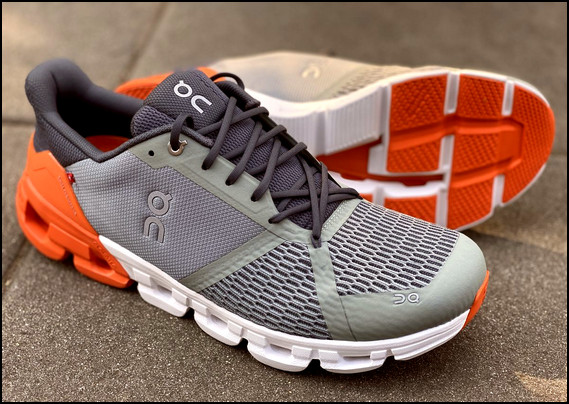
The Cloudflyer boasts a Helion™ superfoam midsole for a responsive ride, while a wider outsole and larger cloud elements enhance stability and impact absorption. Its lighter weight makes it suitable for various paces and distances.
But for runners craving maximum cushioning, the On Cloudstratus delivers.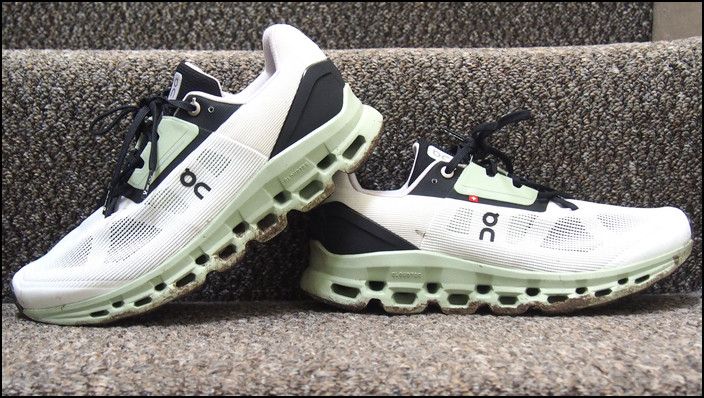
It packs two layers of Helion™ foam in the midsole, creating a pillowy feel for long runs and hard surfaces. The thicker cloud elements and slightly higher heel drop offer more impact protection and a smoother transition.
Let’s examine each shoe’s details to determine which suits your requirements better.
Characteristic Comparison between On Cloudstratus 3 and Cloudflyer 4
The shoes come in different upper materials, responsiveness levels, weights, and durability. Knowing these traits helps you make informed decisions based on your running and workout preferences, goals, and comfort requirements.
The following table highlights the attributes of Cloudstratus 3 and Cloudflyer 4.
| Feature | On Cloudstratus 3 | On Cloudflyer 4 |
|---|---|---|
| Release Date | 2023 | 2022 |
| Weight | 10.44 oz | 10.86 oz |
| Stack Height | 35.3 mm in the Heel 26.2 mm in the Forefoot | 33.3 mm in the Heel 23.5 mm in the Forefoot |
| Heel-to-Toe Drop | 9.1 mm | 9.8 mm |
| Upper | Engineered mesh | Engineered mesh with plastic overlays |
| Midsole | Double-layer Helion™ superfoam with CloudTec® pods | Combination of Helion™ superfoam and Zero-Gravity foam with CloudTec® pods |
| Outsole | CloudTec® rubber lugs | CloudTec® rubber lugs |
| Cushioning | Soft and Plush | Moderate and Responsive |
| Sizing | True to Size | True to Size |
| Ride | Smooth and Comfortable | Responsive and Stable |
| Breathability | Excellent | Good |
| Stability | Less stable, Good for neutral runners | More stable, Suitable for neutral and mild overpronation |
| Durability | More durable | Less durable |
| Price | Around $179.99 | Around $169.99 |
| Best for | High mileage runners, Daily training, Recovery runs | Daily training, Tempo runs, Runners seeking a balanced and stable shoe |
The table suggests that both shoes are outstanding products from On Running. However, upon a more detailed analysis of specific features, it becomes evident that one surpasses the other in performance.
For additional information, refer to the next section.
7 Key Differences between On Cloudstratus 3 and On Cloudflyer 4
Understanding the distinctive attributes that differentiate On Cloudstratus from Cloudflyer is crucial for individuals striving for optimal athletic performance or comfort in their running kicks.
These variances include shoe stability, responsiveness, cushioning technology, and overall performance, all of which significantly influence a runner’s overall experience.
Here are the discrepancies between Cloudstratus and Cloudflyer.
1. Upper Construction
I love the sleek and minimalist vibe that On is known for, and the Cloudstratus 3 truly lives up to this reputation.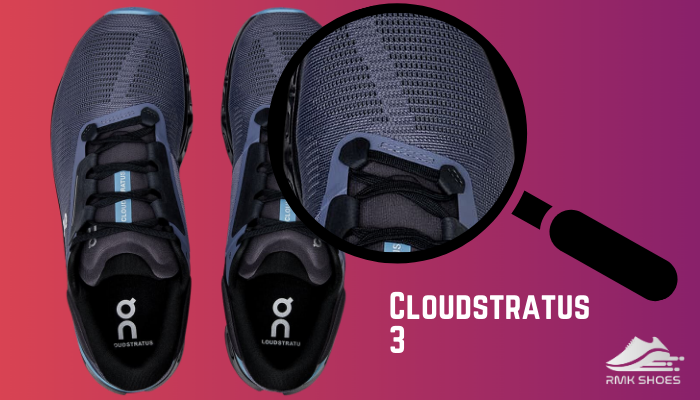
These runners’ thick, engineered upper provided a snug fit. Still, I could move my toes naturally.
Thanks to the well-padded plastic heel counter, I could wear them all day without feeling any discomfort. The standard lacing system, reinforced for a secure fit, made these road shoes feel tailored just for me.
I thought the tiny ventilation holes in the upper would deliver excellent airflow, but the breathability was limited due to an extra fabric layer.
Surprisingly, though, this added layer didn’t compromise comfort.
If you want better breathability, try the Cloudswift or Cloud X for hot runs.
Now, let’s talk about the On Cloudflyer.
The re-engineered upper of the Cloudflyer 4 brings in more weight with increased padding and structure.
Plastic overlays not only protect the toe but also reinforce lace holes and frame the side panels, ensuring a secure fit. The innovative tongue design, sliding under side overlays and merging with the toe box mesh, is a clever touch.
Initially, I felt slightly confined in the toe area, but the wide-width option solved the issue.
The higher heel collar aimed for a secure feel, although it occasionally caused discomfort around my ankles. The external heel counter guided my foot plant-forward, but the opening of the front of the lateral ankle sometimes caused skin irritation during lacing.
On Running says the Cloudflyer’s tongue is the plushest ever, but to me, it’s just a standard tongue, although it’s slightly thicker than the Cloudstratus.
In the end, On Cloudstratus wins my vote for striking a perfect balance between comfort, style, and functionality.
2. Midsole & Cushioning
The On Running Cloudstratus boasts a Helion superfoam midsole. I found it incredibly supportive yet responsive.
The new nylon speedboard was a game-changer. It smoothed out my running transitions.
The double stack of On’s Helion foam clouds really stood out to me. They provided excellent protection against impact, especially on longer runs.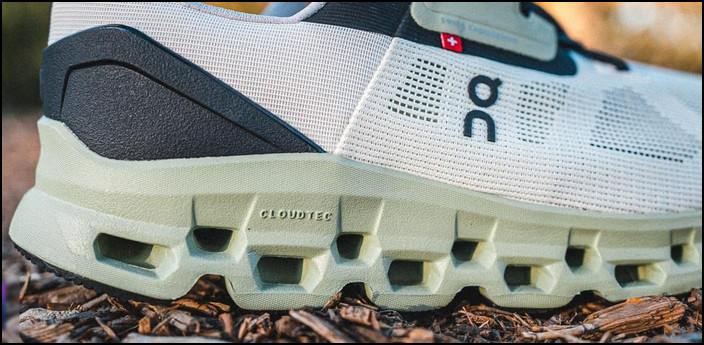
Plus, the substantial rocker design added excellent stiffness to the shoe, ensuring smooth transitions with each stride.
Compared to other daily trainers, the Cloudstratus 3 has a firmer feel, but it still feels softer and more cushioned compared to its previous version. The addition of Helion™ superfoam enhanced comfort and offered protection against stones and debris on the road.
Now, let’s talk about the On Cloudflyer. Its midsole and cushioning system are equally impressive.
The combination of softer Helion superfoam in the front and more dense Zero Gravity foam in the back provided a unique balance of cushioning and support. The CloudTec® units with Helion™ and Zero Gravity foam pods created a cushioning experience like no other.
The speed board in the Cloudflyer 4 added stiffness for energy dispersion and the CloudTec cushioning with pods that compress and rebound made each step incredibly responsive.
I love the Helion foam in the front for its softness. It is perfect for absorbing the initial impact of my stride, while the Zero Gravity foam in the back provides the density and support needed for stability.
Both shoes feature On’s signature speed board for forward propulsion. This feature helped with my overall speed and efficiency during runs.
In terms of comfort, the Cloudflyer 4 took it up a notch with increased tongue padding in the new version, providing extra comfort around my ankle area.
Ultimately, the Cloudflyer won me over with its dynamic CloudTec® cushioning and the perfect blend of protection and responsiveness.
3. Outsole & Traction
The Cloudstratus 3 features a moderate outsole rubber that has been my secret weapon for a better grip.
Whether tackling a sharp turn or pushing the pace on wet terrain, the enhanced traction has given me the confidence to go all out without worrying about slipping.
The double-stacked helium cloud technology in the On Cloudstratus provides a cushioned landing that feels like running on a cloud or, in this case, two clouds stacked on top of each other.
It’s not just about comfort; it’s about protecting my joints during those high-impact moments.
I can feel the clouds working together to give me a smooth and stable landing, making each step less of a jolt and more of a glide.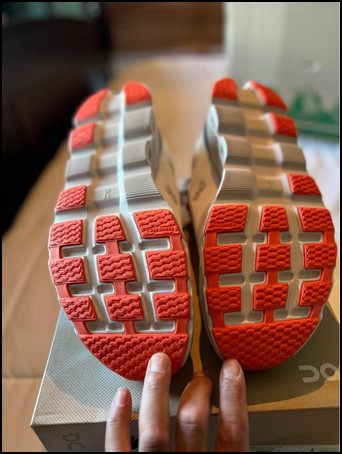
On the other side of the track, we have the Cloudflyer 4.
Its durable rubber coverage has been my go-to for long-distance runs. The classic Cloud pods with intentional spacing create a unique feel underfoot.
The complete coverage in high-impact areas means I can push myself harder without worrying about premature wear and tear.
In this redesigned outsole, small stones don’t get stuck, sparing me from any annoying, unexpected hurdles. It’s a small detail, but it has made a noticeable difference during my trail runs.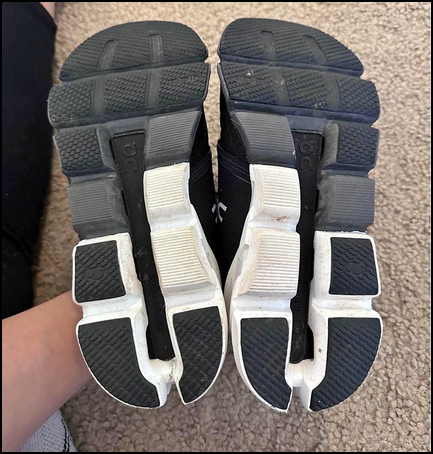
However, for me, the Cloudstratus 3 takes the crown. The extra cushioning and refined lugs provide superior traction.
4. Fit and Comfort
I found the On Cloudstratus engineered with a focus on comfort and reliability.
The plush upper provided a cozy feel, especially around the heel and tongue, making it a joy to slip into for my runs.
During easy jogs or long runs, the Cloudstratus proved comfortable and supportive.
However, some users may feel a slight disconnect due to its weight, although it wasn’t a major issue for me.
The Cloudstratus 3 fits true-to-size, so no fussing around with adjustments.
The roomy toe box was a plus, but I did have to pay attention to the midfoot hold to ensure stability. The unique shape of the shoe secured my ankle nicely. The secure lacing system with extra eyelets allowed for a locked-down feel.
Overall, while the Cloudstratus provided comfort for long miles, you should go a half size down for a snugger fit.
Now, shifting focus to the On Cloudflyer, I experienced different comfort with this shoe.
This shoe boasts a roomy and high-volume design, making it a comfortable choice for those who appreciate more space. The built-in sockliner and thick tongue create a snug and sock-like feel during the first fitting.
But this road runner delivered mixed comfort experiences due to the breathable front half, contrasting with the less breathable, thicker back half.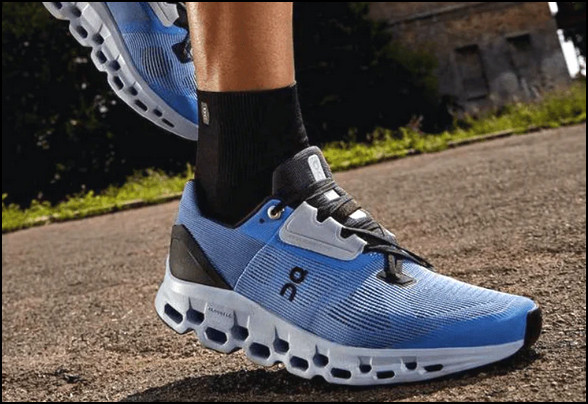
It’s a delicate balance, but I appreciate the effort.
The Cloudflyer 4 offers a nice blend of cushioning, protection, and firm responsiveness, creating an overall comfortable experience.
The redesigned upper, crafted from recycled materials, adds a plusher and softer feeling. The lockdown is superb, thanks to the upgraded lacing system and redesigned ankle, Achilles, and heel counter section.
This snug fit is further complemented by the true-to-size upper that stretches to accommodate larger feet.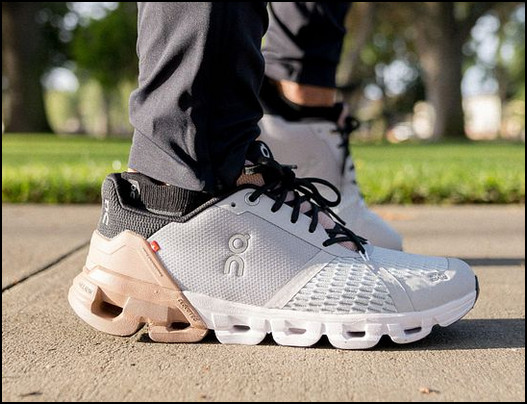
In conclusion, both the On Cloudstratus and On Cloudflyer offer impressive features for fit and comfort.
But my personal preference leans towards the Cloudstratus. Its plush upper, true-to-size fit, and unique ankle support made it the best choice for my runs.
5. Durability Dynamics
One thing I really appreciate about the Cloudstratus is the modest level of outsole rubber. It provides a good grip while also enhancing durability.
The Helion™ foam used in these road running shoes is top-notch when it comes to durability.
Even after putting in 50 kilometers, I barely noticed any wear and tear.
The refined lugs on the outsole and the sealed-off channel in the midsole add to the resilience, making these shoes last longer. Plus, the midsole is durable, temperature-resistant, and bouncier, thanks to the thin plastic board that enhances responsiveness.
The outsole’s rubber with lateral cuts improves grip, and the reduced surface area of the Cloud pods adds to their durability.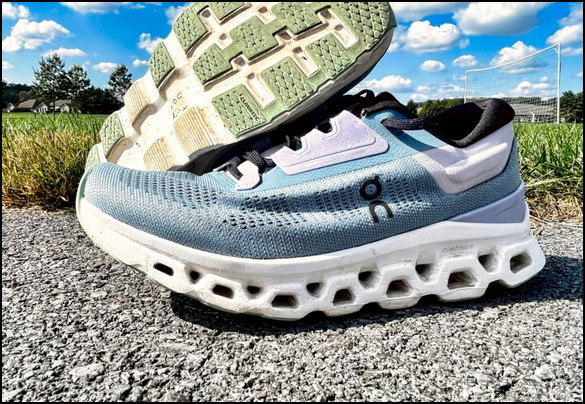
Now, let’s talk about the On Cloudflyer 4.
The durable rubber outsole is a standout feature, providing excellent longevity. I also like how the high-impact areas are covered, which adds an extra layer of protection and durability.
On the bright side, these jogging shoes maintain their shape even after clocking in 50 miles of running, which speaks volumes about their durability. The cushioning is another highlight. It’s high-quality and doesn’t sacrifice durability, ensuring a comfortable yet long-lasting ride.
However, one drawback I’ve noticed is that tiny pebbles tend to get stuck in the outsole, compromising durability over time.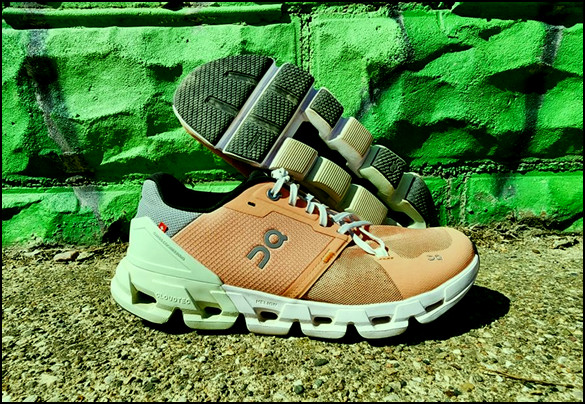
So, if I had to pick a winner based on durability, I’d lean towards the Cloudstratus 3.
6. Breathability Showdown
The On Running Cloudstratus 3 has perforations in the upper. They allow excellent airflow, keeping my feet cool and comfortable even during high-speed runs.
Plus, the breathable mesh with its airflow-optimized pattern is brilliant.
It feels like my feet can breathe in these shoes, and the fact that the laces don’t pull tight against the upper adds to the overall breathability.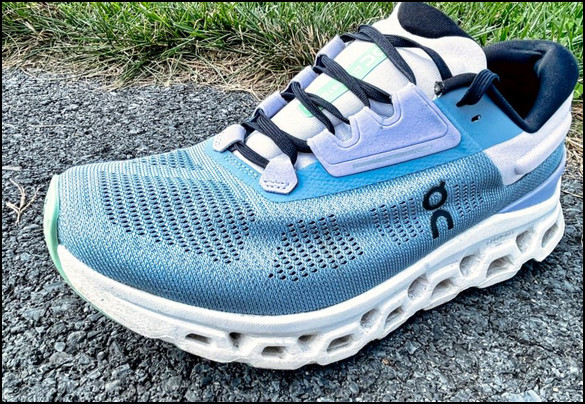
On the other hand, the Cloudflyer 4 has its own set of breathability features.
The front half of the shoe is super breathable, which is great for those hot summer runs. But the back half and the thick tongue can make things a bit warmer, especially on longer runs.
However, the re-engineered mesh upper improves the overall breathability.
Another cool feature of the Cloudflyer 4 is the new fork design, which reinforces the medial side of the shoe for increased breathability. It is a unique feature I haven’t seen in other shoes, and it truly makes a difference in airflow.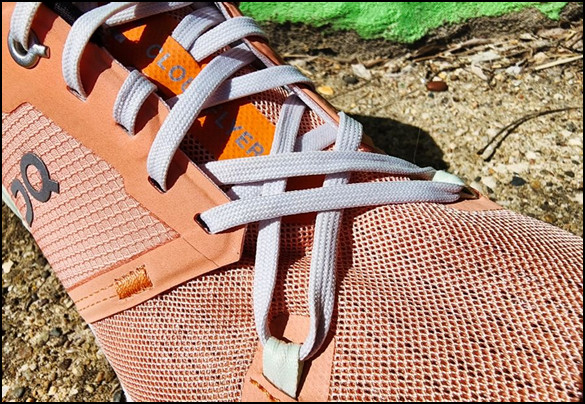
Overall, both shoes offer excellent breathability, but if I had to pick a winner, I’d go with the On Cloudstratus 3.
7. Stability & Support
The Cloudstratus feels stable and comfy, especially when running at a slower pace. That’s great for recovery runs or just taking it easy on my feet.
The rigid external heel clip is a nice touch because it gives me a sense of security and hold. It makes sure my foot stays where it should be.
The midsole design also contributes to the stability, and I can feel that support under my feet.
Additionally, the double sole adds some extra stability without making the shoe feel too heavy, which is perfect for me since I’m not the heaviest runner out there.
The shoe’s firmness gives me a smooth and stable ride.
And let’s not forget about the high medial heel cup, a feature I didn’t know I needed until I tried it. It keeps my foot in place and prevents unnecessary movement during running or walking.
Now, onto the Cloudflyer 4.
This active footwear offers a more neutral to mild stability than the Cloudstratus 3.
I noticed that the stability feels a bit further back, closer to the heel, which is interesting. The dual-density foams used in the midsole, Helion & Zero-Gravity, work together to provide that support, and I can feel it when I’m running.
The J-shaped design for pronation support is a smart feature because it caters to those who need extra guidance in their stride.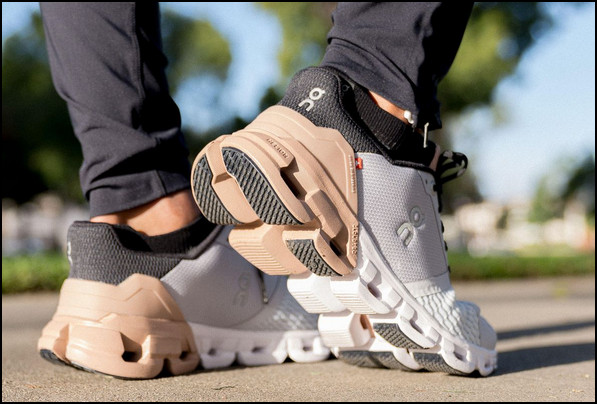
The lockdown and guidance are superb. I never feel like my foot slipping or moving around too much in these road runners.
The wider platform and On’s signature Speedboard also contribute to the stability, which is great for me since I have flexible arches and tend to overpronate a bit.
Now, choosing a winner depends on personal preference and running style, but if I had to pick, the On Cloudflyer edges it out for me.
Pros and Cons of Cloudstratus and Cloudflyer
By assessing the strengths and weaknesses of both On Running shoes, you can make an informed decision based on your running preferences, performance goals, and comfort criteria. This method ensures that you choose footwear that aligns best with your requirements.
Let’s explore the pros and cons of On Cloudstratus and Cloudflyer.
On Cloudstratus 3
- »Sleek, minimalist design.
- »Snug fit with natural toe movement.
- »Comfortable due to well-padded heel.
- »Standard lacing for a secure fit.
- »Nylon Speedboard delivers smooth transitions.
- »Double Helion foam stack for impact protection.
- »Substantial rocker design for stiffness.
- »Better outsole rubber grip.
- »Excellent upper breathability.
- »Lighter compared to the Cloudflyer.
- »Firmer feel than some daily trainers.
- »Roomy toe box may impact midfoot stability.
- »More expensive.
On Cloudflyer 4
- »Re-engineered upper with plastic overlays.
- »Innovative tongue design.
- »Star lacing provides a snug fit.
- »Helion and Zero Gravity foam for unique cushioning.
- »External heel counter for guidance.
- »More durable rubber outsole.
- »Excellent stability with dual-density foams.
- »Breathable front half and unique fork design.
- »Less expensive.
- »Increased weight due to added structure.
- »Confined toebox (resolved with wide-width).
- »A higher heel collar may cause discomfort.
- »Varying breathability in different parts.
- »Pebbles may compromise outsole durability.
- »Heavier than the Cloudstratus.
Cloudstratus 3 or Cloudflyer 4: Which is the Best for You?
Both the Cloudstratus and Cloudflyer are excellent On Cloud shoes, but the best choice depends on your individual needs and priorities.
For maximum cushioning and comfort on long distances, the Cloudstratus reigns supreme.
Its double layer of Helion™ foam delivers plush shock absorption, making it ideal for high-mileage runners or those seeking extra impact protection.
But It comes at the cost of slightly less stability and responsiveness.
However, if you prioritize a balance of cushioning, support, and responsiveness, the Cloudflyer shines. Its single layer of Helion™ foam offers ample comfort for moderate distances.
The Cloudflyer also boasts a supportive medial post, making it an excellent choice for runners needing stability or recovering from injuries. But it is not good enough for tackling marathons or long runs.
Ultimately, the best On Running shoe for you boils down to your preference.
Consider your typical running distances, desired level of cushioning, and need for stability before making your choice.
FAQs
Is On Cloudstratus worth it?
Whether the On Cloudstratus is worth it depends on your needs. They offer great comfort and smooth rides but aren’t the lightest or fastest. They shine for long runs and heavier runners. Consider your priorities and budget before getting one.
Which is better, Cloudmonster or Cloudstratus?
Choosing Cloudmonster or Cloudstratus depends on your running preferences. Cloudmonster is lighter and snappier for faster runs, while Cloudstratus is plusher and softer for everyday comfort and longer distances. Both offer superb cushioning, but Cloudstratus feels like sinking in more.
Which On Cloud has the most cushioning?
The On Cloud with the most cushioning is the Cloudstratus 3. It has double the CloudTec® elements compared to other On shoes, making it super soft and comfortable for your feet. It’s like walking on clouds.
Do podiatrists recommend On Cloud shoes?
Some podiatrists like On Cloud shoes for their mix of cushioning and support, especially for neutral walkers and people who stand a lot. However, they are not suitable for everyone, particularly those who overpronate, as they lack built-in stability features.

